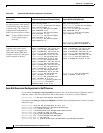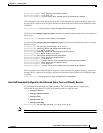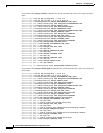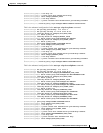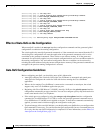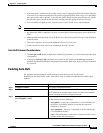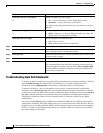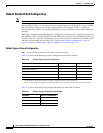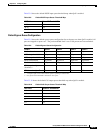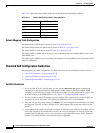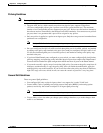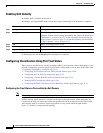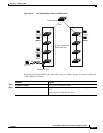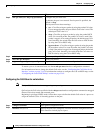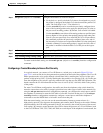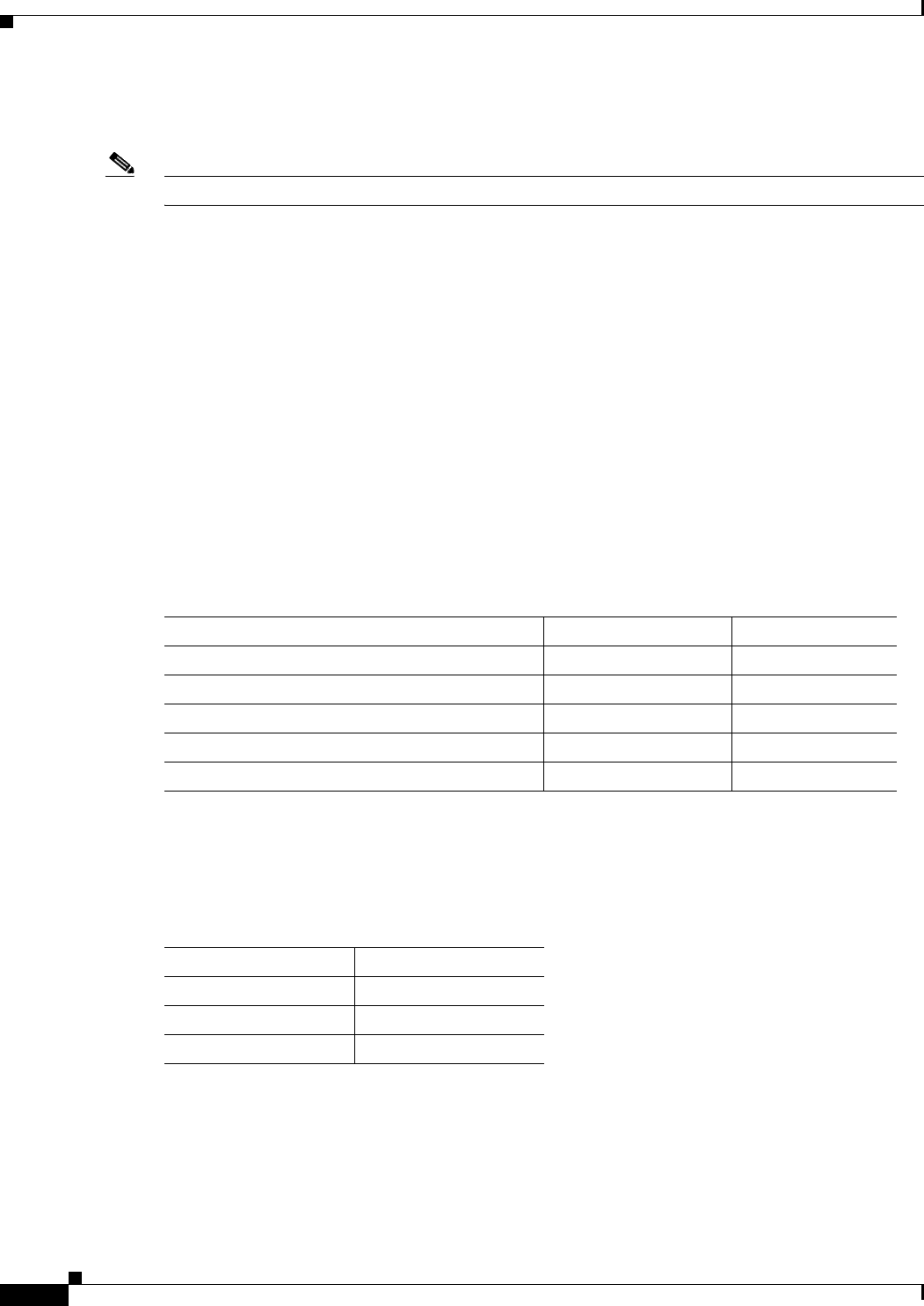
33-36
Catalyst 2960 and 2960-S Switch Software Configuration Guide
OL-8603-09
Chapter 33 Configuring QoS
Configuring Standard QoS
Default Standard QoS Configuration
Note Catalyst 2960-S switches do not support ingress queueing.
QoS is disabled. There is no concept of trusted or untrusted ports because the packets are not modified
(the CoS, DSCP, and IP precedence values in the packet are not changed). Traffic is switched in
pass-through mode (packets are switched without any rewrites and classified as best effort without any
policing).
When QoS is enabled with the mls qos global configuration command and all other QoS settings are at
their defaults, traffic is classified as best effort (the DSCP and CoS value is set to 0) without any policing.
No policy maps are configured. The default port trust state on all ports is untrusted. The default ingress
and egress queue settings are described in the “Default Ingress Queue Configuration” section on
page 33-36 and the “Default Egress Queue Configuration” section on page 33-37.
Default Ingress Queue Configuration
Note Catalyst 2960-S switches do not support ingress queueing.
Table 33-6 shows the default ingress queue configuration when QoS is enabled.
Table 33-7 shows the default CoS input queue threshold map when QoS is enabled.
Table 33-6 Default Ingress Queue Configuration
Feature Queue 1 Queue 2
Buffer allocation 90 percent 10 percent
Bandwidth allocation
1
1. The bandwidth is equally shared between the queues. SRR sends packets in shared mode only.
44
Priority queue bandwidth
2
2. Queue 2 is the priority queue. SRR services the priority queue for its configured share before servicing the other queue.
010
WTD drop threshold 1 100 percent 100 percent
WTD drop threshold 2 100 percent 100 percent
Table 33-7 Default CoS Input Queue Threshold Map
CoS Value Queue ID–Threshold ID
0–4 1–1
52–1
6, 7 1–1



